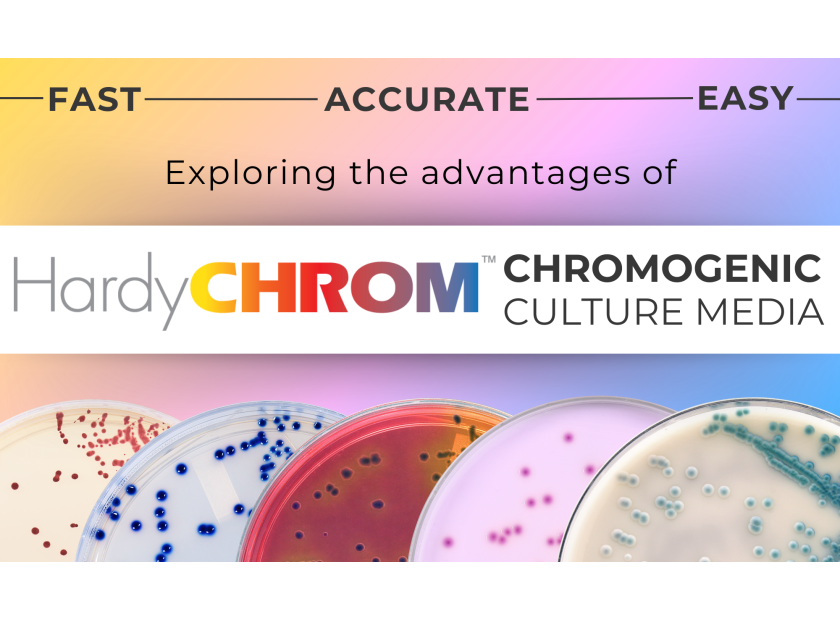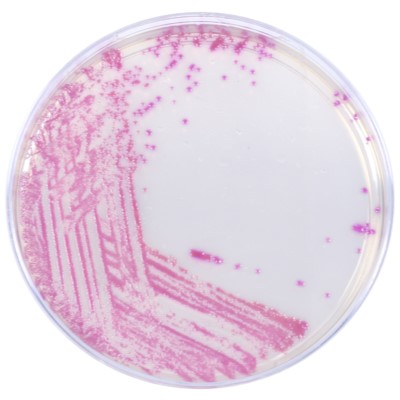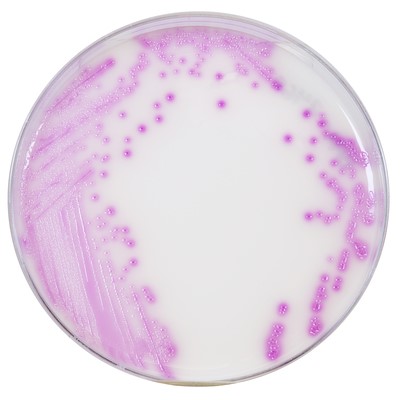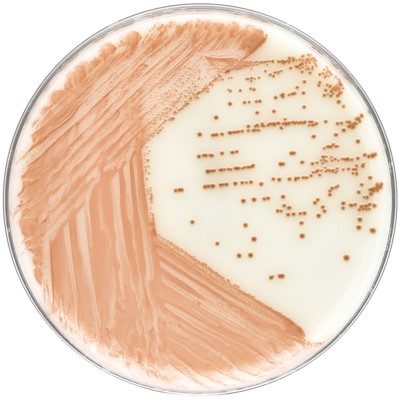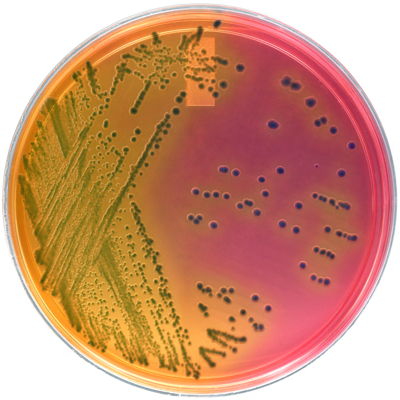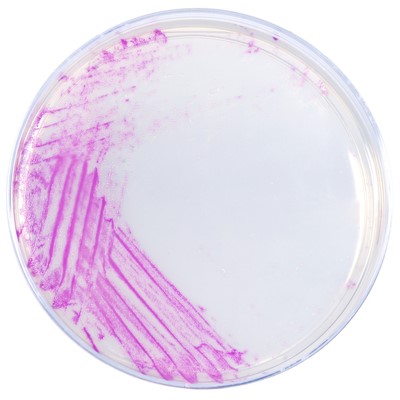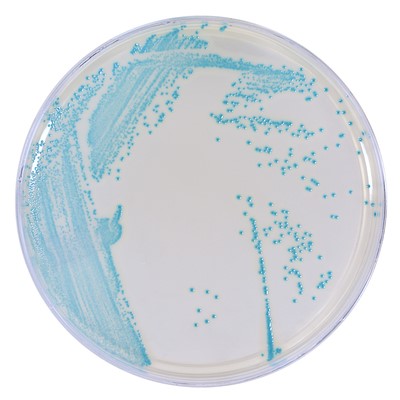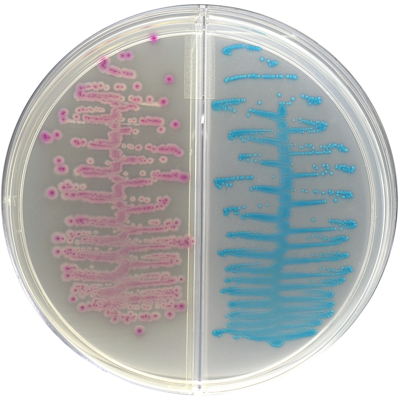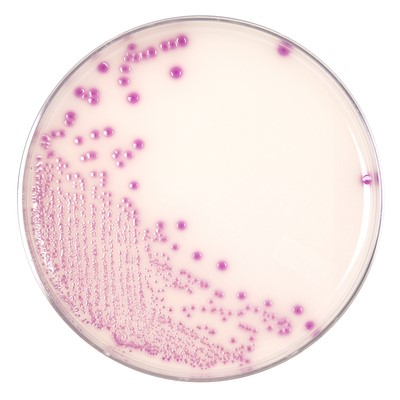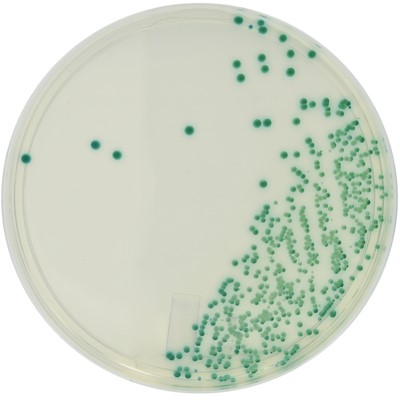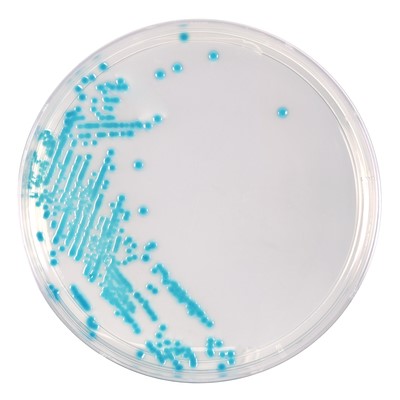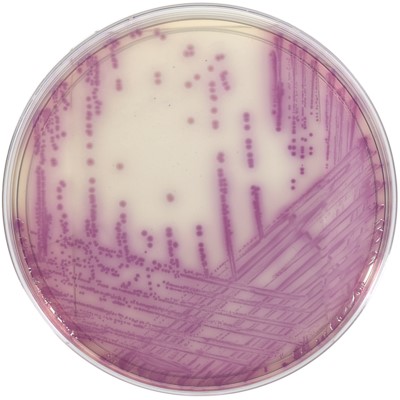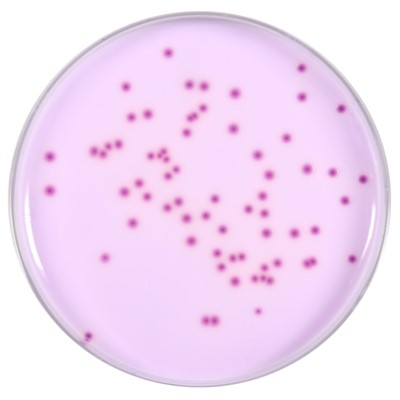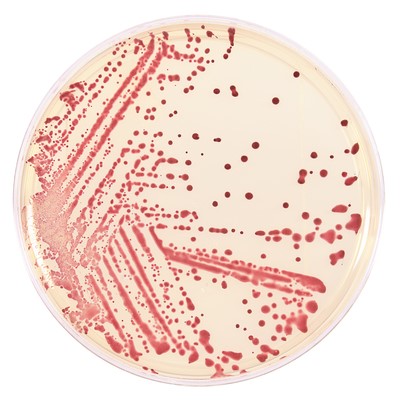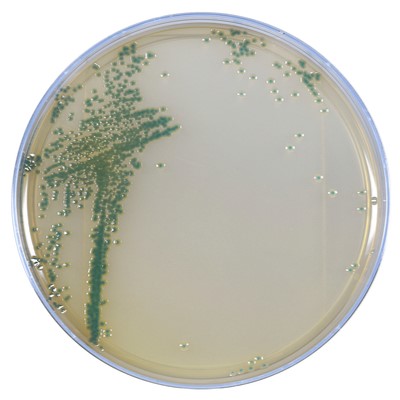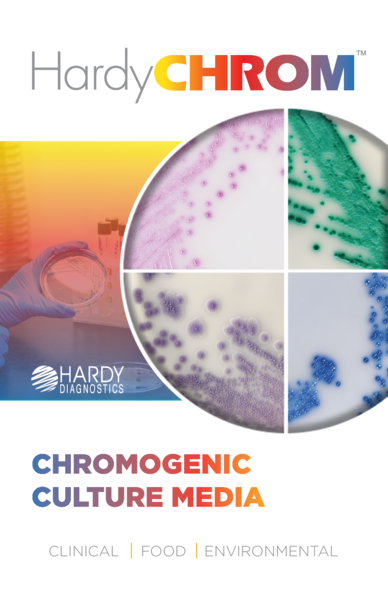The Colorful History of Chromogenic Media
About 45 years ago, the first solid chromogenic media was invented and patented in France. The idea was born out of the thought that it might be advantageous to be able to identify various bacterial types on solid agar by the color of colonies. The name comes from the Greek word chroma, meaning color.
The science, as noted in 2020 article published on the American Society of Microbiology articles page, lays it out like this:
- The media contains molecules called chromogens. A chromogen molecule consists of a carbohydrate substrate (the ‘key’ to a specific enzyme ‘lock’), as well as a chromophore. The chromogen is colorless because the chromophore does not absorb visible light while conjugated to the substrate.
- When a bacterial organism with specific enzymatic activity comes into contact with the chromogen molecule, that enzyme cleaves the chromogen molecule, releasing the chromophore.
- When the chromophore is not conjugated, its color becomes visible. By using a chromophore that does not diffuse readily into the surrounding media, the color stays concentrated in the area where the bacterial colony with the target enzymatic activity grew. Thus, the colony itself takes on the chromophore's color. (1)
In its solid state, the evolution of chromogenic media has transformed the way microbiology laboratories in all segments, (clinical, food, environmental), are able to quickly identify different species of bacteria through the naked eye.
The advantages of chromogenic media include increased specificity, reduced time for identification, and improved ease of use. It has been particularly valuable in clinical microbiology laboratories for the rapid and accurate identification of pathogenic bacteria. Due to its high specificity, in many cases follow-up confirmation tests are not needed.

Limitations of chromogenic media
As with other methods, chromogenic media will rarely give false positives from organisms that are showing similar biochemical reactions.
The average time-to-result for the chromogenic media is from 24 to 48 hours. While this makes it faster than traditional methods, it is still slower than some other alternative methods like polymerase chain reaction (PCR) and immunology. Another drawback is the need for incubator space.
Specific to food, because the chromogenic media is considered an alternative method, it needs to be validated following IS0 16140-1&2 and by the customer following ISO1640-3.
Advantages of chromogenic media
The benefits of using chromogenic media include faster results, reliable visual detection and additional testing is possible directly from the media. Compared with the use of conventional culture media, this often results in cost savings from reduced labor time and reduced use of reagents as fewer biochemical and/or serological confirmation tests are required.
Chromogenic media are available as a dehydrated bulk powder. They are also available in ready-to-use formats and can be utilized as presence/absence tests.
In summary, benefits of chromogenic media include:
- Enhanced accuracy
- Easy microbial detection and identification using color
- Cost-efficient working process
- Faster bacterial identification and results
- Available as dehydrated media or in ready-to-use formats
- Only requires basic microbiology skills to use
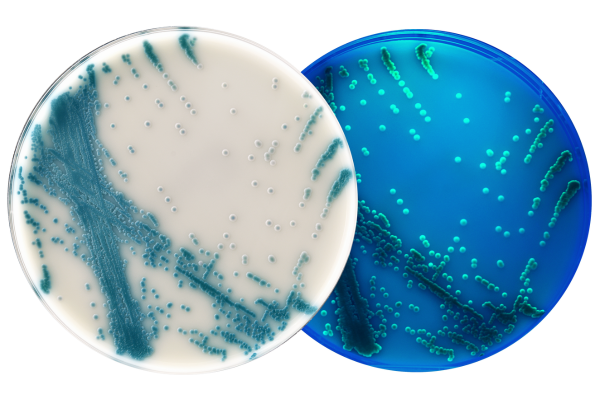
Hardy Diagnostics was the first company to introduce chromogenic media to the US.
Hardy Diagnostics was the first company to introduce chromogenic media to the United States in 1996. Hardy manufactures and sells its chromogenic media line called HardyCHROM™ across the globe with more than 20 chromogenic agars currently commercially available.
The latest two releases include HardyCHROM™ Group A Strep Chromogenic Agar (Cat. no. G337) and HardyCHROM™ Candida + auris (Cat. no. G343) Chromogenic Agar, which not only displays bright teal colors to the naked eye, but positive colonies of Candida auris will also fluoresce under UV light.
Hardy continues to innovate and expand its catalog of chromogenic agars with improved specificity and a greater range of coverage of targeted organisms.
References
1. Prinzi, Andrea, and Dr. Rodney Rohde. “How ChromagarTM Revolutionized Microbe Identification.” ASM.Org, ASM, 11 Sept. 2020, asm.org/Articles/2020/September/How-CHROMagar-TM-Revolutionized-Bacterial-Identifi.
Meet the author

CLINICAL PRODUCT MANAGER at HARDY DIAGNOSTICS
Megan Roesner, B.A. Journalism and Mass Communications
Megan is a seasoned writer and marketing professional who comes from a background in television journalism, followed by fifteen years leading mulitple hospital marketing and communications teams with the largest not-for-proft health system in the U.S. Megan has won numerous tv, writing and marketing awards and is a member of a number of professional public relations and marketing associations. Her passion for continuous professional challenges and life-long learning led her to Hardy Diagnostics. Megan is proud to work amongst a wonderful marketing team surrounded by experienced microbiologists and scientists who constantly push for the latest and greatest products to help diagnose and detect disease. In her current role, Megan is in charge of product development and marketing Hardy's clinical category which encompasses hospitals and health systems, clinics and research institutions, higher education and veterinary diagnostics. In her free time, Megan enjoys being a mom to her two very active boys, cats, a dog, a very old goldfish and 24 chickens.


